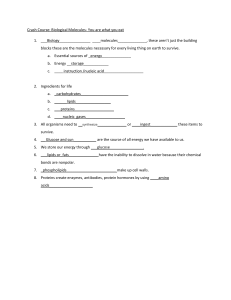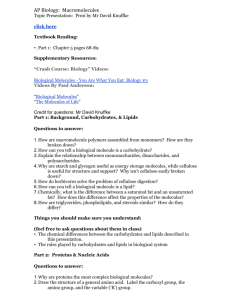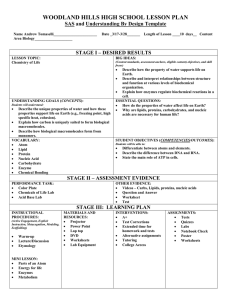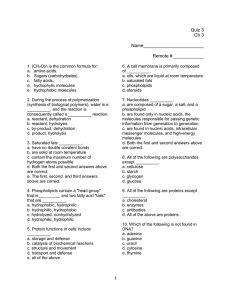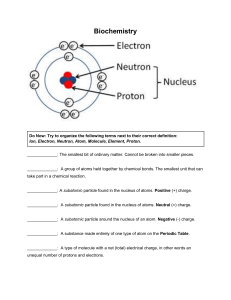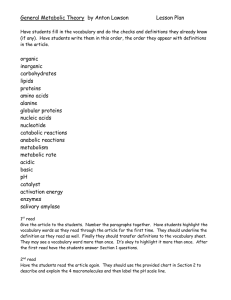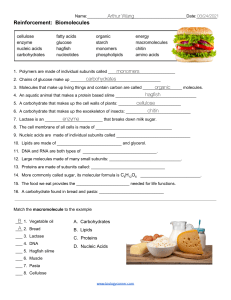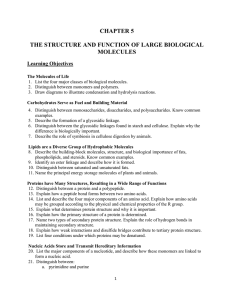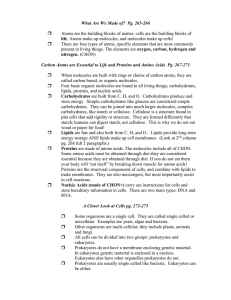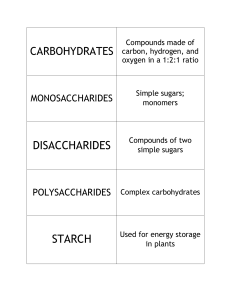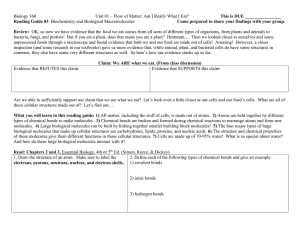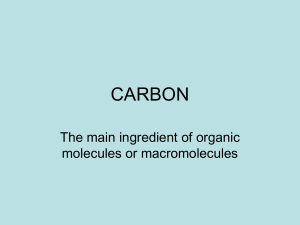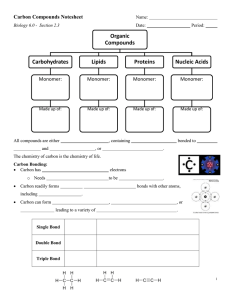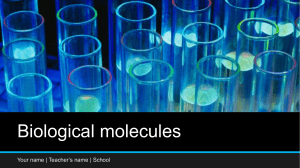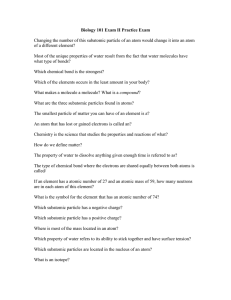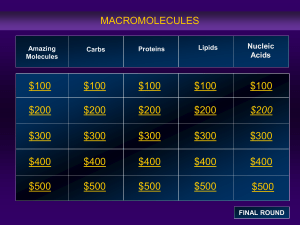MITOCW | MIT7_01SCF11_track14_300k.mp4
advertisement
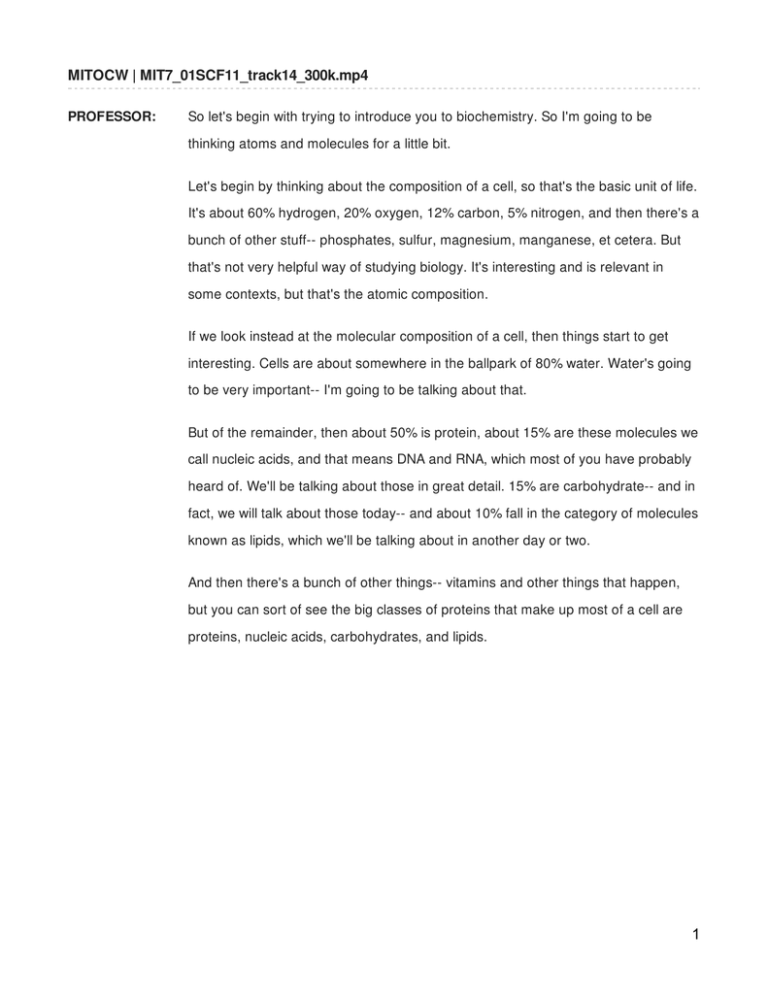
MITOCW | MIT7_01SCF11_track14_300k.mp4 PROFESSOR: So let's begin with trying to introduce you to biochemistry. So I'm going to be thinking atoms and molecules for a little bit. Let's begin by thinking about the composition of a cell, so that's the basic unit of life. It's about 60% hydrogen, 20% oxygen, 12% carbon, 5% nitrogen, and then there's a bunch of other stuff-- phosphates, sulfur, magnesium, manganese, et cetera. But that's not very helpful way of studying biology. It's interesting and is relevant in some contexts, but that's the atomic composition. If we look instead at the molecular composition of a cell, then things start to get interesting. Cells are about somewhere in the ballpark of 80% water. Water's going to be very important-- I'm going to be talking about that. But of the remainder, then about 50% is protein, about 15% are these molecules we call nucleic acids, and that means DNA and RNA, which most of you have probably heard of. We'll be talking about those in great detail. 15% are carbohydrate-- and in fact, we will talk about those today-- and about 10% fall in the category of molecules known as lipids, which we'll be talking about in another day or two. And then there's a bunch of other things-- vitamins and other things that happen, but you can sort of see the big classes of proteins that make up most of a cell are proteins, nucleic acids, carbohydrates, and lipids. 1
